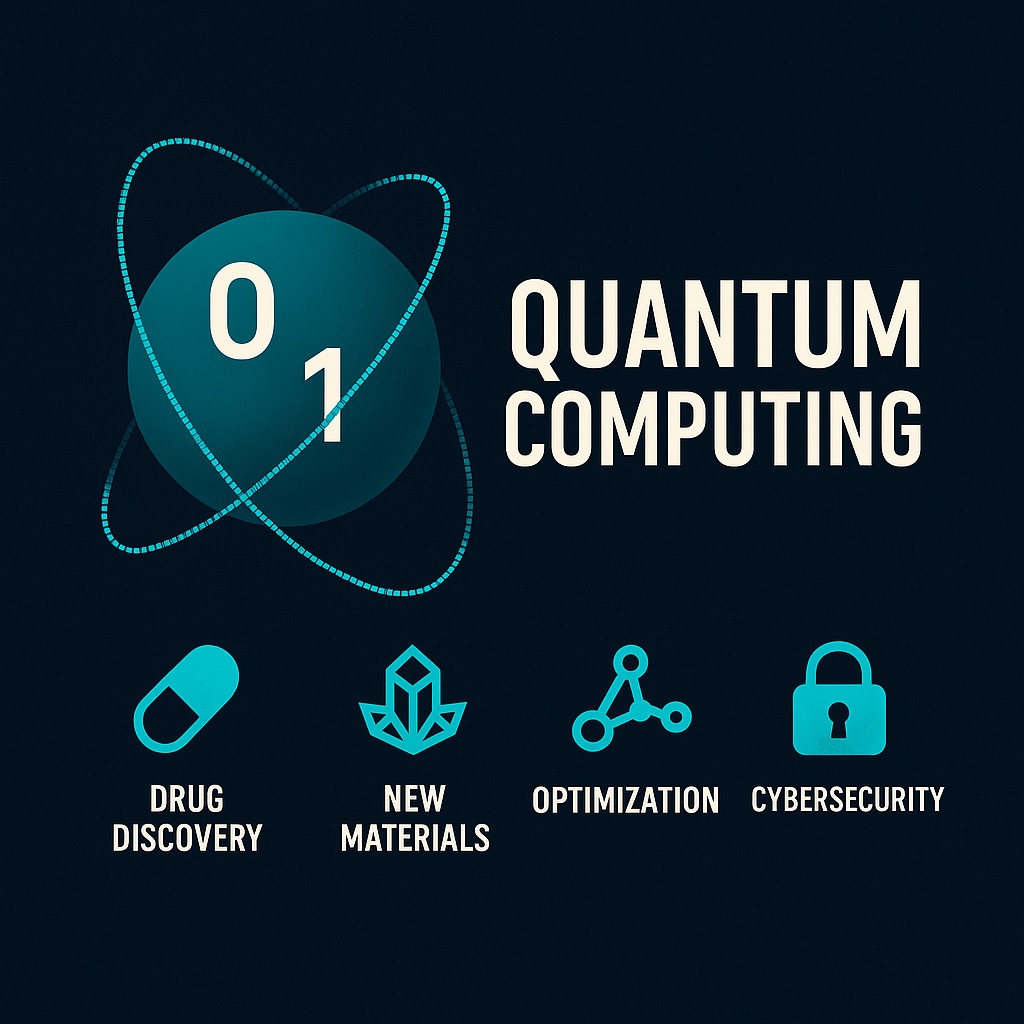We hear about quantum computing almost daily—in headlines, in research labs, and in conversations about the future of technology. It's often presented as the magic bullet that will revolutionize industries: from drug discovery and financial optimization to cybersecurity and artificial intelligence. But what is it really? And how close are we to experiencing its impact in everyday life?
This article is meant to bridge the gap between the deep technical reality and the accessible excitement surrounding quantum computing.
From Classical to Quantum: A New Paradigm
To understand quantum computing, it helps to first revisit how classical computers—the ones we use every day—work. Classical machines rely on bits, which can either be a `0` or a `1`. They process these bits using transistors, following an architecture that has evolved from vacuum tubes in the 1940s to today's processors with billions of transistors packed into a tiny chip.
Quantum computers, on the other hand, use qubits. Unlike classical bits, qubits can exist in a superposition, meaning they can be both `0` and `1` at the same time. Even more intriguingly, qubits can be entangled—a phenomenon where the state of one qubit is directly connected to another, no matter how far apart they are.
This isn't just a small upgrade to our current computers. It's a new way of processing information that allows us to tackle problems that classical computers struggle with, especially those involving massive complexity and quantum-scale systems (like molecular interactions or material science).
A Brief History of Quantum Computing
Quantum computing as a concept is relatively young. Physicist Richard Feynman was one of the first to suggest in the 1980s that if we want to simulate quantum systems—something nearly impossible for classical computers—we should use a quantum machine.
This idea gained traction in the 1990s, when researchers discovered algorithms that showed real potential. The most famous is Shor's algorithm, which can factor large numbers efficiently. Why does that matter? Because modern encryption relies on the fact that factoring huge numbers is difficult for classical computers. If large-scale quantum computers become practical, much of today's cryptography could be broken overnight.
Alongside algorithms came the development of quantum error correction, a way to protect fragile quantum states from noise and instability. This was crucial—because quantum systems are notoriously delicate. Even the smallest disturbance can disrupt a calculation.
The NISQ Era: Where We Are Now
We're currently in what physicist John Preskill called the NISQ era—short for *Noisy Intermediate-Scale Quantum*. Today's quantum processors have around 50–100 qubits. That's just beyond the point where classical supercomputers can keep up. But here's the catch: these devices are noisy, meaning their calculations are riddled with errors.
So while we can't yet solve world-changing problems with them, NISQ devices are an exciting playground. They let scientists and engineers experiment with quantum simulations, optimization, and hybrid algorithms (where quantum processors work together with classical ones). It's a stepping stone—like being in the 1950s with the first transistor computers, long before the personal computer revolution.
What Quantum Computers Could Mean for Us
The potential applications of quantum computing are vast:
- Healthcare & Drug Discovery: Simulating molecules at a quantum level could lead to breakthroughs in pharmaceuticals.
- New Materials: From high-temperature superconductors to next-gen batteries, quantum simulations could unlock materials we've only dreamed of.
- Finance & Optimization: Many real-world problems—like scheduling, logistics, or portfolio optimization—are filled with "binary decisions." Quantum computers excel in this space.
- Cybersecurity: Current encryption systems could be rendered obsolete, pushing us to adopt quantum-resistant cryptography.
- Artificial Intelligence: Quantum machine learning could open new approaches to pattern recognition, though this is still very experimental.
Beyond the Hype
The excitement is justified, but it's important to stay grounded. Quantum computing isn't a silver bullet, nor will it replace classical computing. Instead, it will complement it—serving as a powerful tool for specific problems where classical methods fall short.
The reality is that reliable, fault-tolerant quantum computers—machines capable of solving massive real-world problems without being disrupted by noise—are still years, possibly decades, away. But the progress being made is real. Just as the integrated circuit launched the digital revolution, quantum computing could become one of the defining technologies of this century.
Final Thoughts
Quantum computing sits at the intersection of science fiction and reality. We're in the early days, experimenting with noisy prototypes, yet the roadmap ahead is filled with transformative potential.
If the 20th century was defined by the transistor and Moore's Law, the 21st may well be remembered for qubits and entanglement. The journey won't be quick, but it will be one of the most fascinating scientific adventures of our time.
Sources
MIT xPRO Quantum Computing Fundamentals - MIT's professional education program covering the fundamentals of quantum computing, from quantum mechanics to practical applications and current research frontiers.
Quantum Computing in the NISQ era and beyond - John Preskill's seminal paper defining the Noisy Intermediate-Scale Quantum (NISQ) era and outlining the path toward fault-tolerant quantum computation.
Connect with Us
See this post on our LinkedIn - Join the conversation on quantum computing's journey from theoretical promise to practical reality.
Follow us for more insights on quantum computing, emerging technologies, and the science shaping our future!
